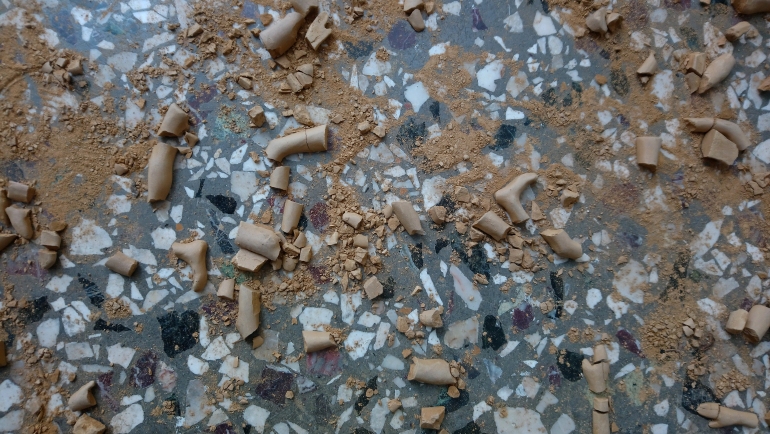Playing on the archaeological theme, the project is essentially an ode to ‘the fragment’. In celebrating lost pieces and oddly assembled parts, the works involve broken objects, the active breaking of objects and the construction and reconstruction of objects. Consisting of the first ‘chapter’ of a continuing project, Disjecta Membra was set up and shown for the first time in DA artspace, Heraklion (Crete, Greece), in October 2018.
The Latin expression ‘disjecta membra’ signifies ‘scattered fragments’. It is frequently used to refer to surviving textual passages or pieces of ancient pottery. Taking a rather literal read on the term, however, I here choose to understand it as ‘scattered limbs’. Broken ceramic bodies, fragments of clay limbs, orphaned and rejected water-colour body parts, are therefore what the works created as part of this project consist of. Both ancient and modern in appearance, the Disjecta Membra appear as odd remains, as strange documents and weird artefacts, and as survivors of time. Disjecta membra are therefore where stories begin.
Presented in the form of installations and displays, and involving active participation on the part of visitors, the works address the following questions: “who broke these objects?”, “how were the objects broken?” and “why were the objects broken?”. Disjecta Membra are also an opportunity to consider the relationship between the part and the whole: does the part always belong to a whole? Are breakage and creation so different from each other?











